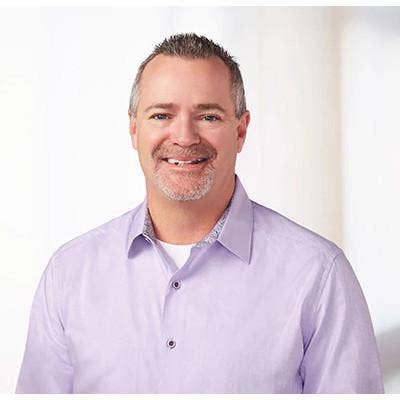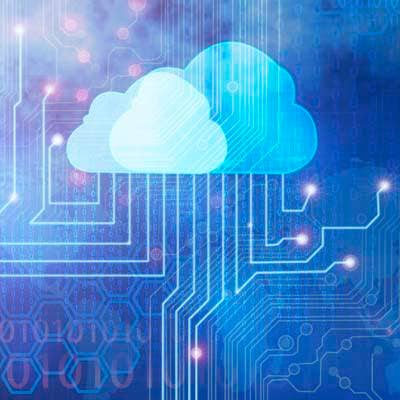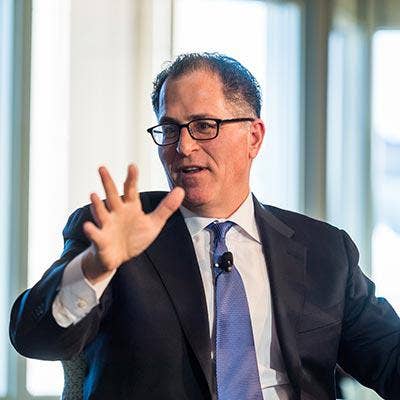CRN Exclusive: Dell Vice Chairman Jeff Clarke On Storage Plans, Public Cloud Costs And Dell EMC Product Roadmap

Clarke Leading The Charge
Jeff Clarke, a 31-year Dell veteran responsible for $70 billion in annual revenue, is implementing an aggressive strategy to break down silos, streamline product roadmaps, and connect Dell EMC technologies and teams together.
"What you're going to see is rather than have four midrange products, which is what we have today in storage, imagine what happens if I take the world leader in storage and I take all of its IP and its engineers and I go, 'Focus on one.' I like my chances. That's what we're going to go do," said Clarke, Dell Technologies vice chairman of products and operations, in an interview with CRN.
Clarke is responsible for Dell's global supply chain and leader of its Infrastructure Solutions Group and Client Solutions product organizations, which includes storage, servers, networking, hyper-converged infrastructures, workstations, client cloud computing and PCs. Clarke talks to CRN about public cloud versus software-defined data centers, product roadmap and bringing together the seven brands inside Dell Technologies to drive channel sales growth.

With Dell Technologies' innovation enginenow full steam ahead, what is your technology vision for the company?
On many levels, you have the power of this combination coming together and a lot of creative minds – whether it's the go-to-market side or in the core products side – that are beginning to hit stride. What happened in the past is EMC made a lot of acquisitions and that strategy served them well, but they left those acquisitions to be separate entities – what I would call silos. What I've spent my first few months on is breaking down those silos because what I care about for example is Dell EMC storage, not a particular brand of product. Why would I do that? I'm putting all of the IP of the organization together, which is a lot -- given that we've been in this business for a very long time, probably more than anybody else. In the past it had been very segmented. In the future, it's a common pool of technology that we will be able to apply to each and every product based on the set of market requirements to win. That is the transformation that is underway inside our storage business unit and we're doing the same thing on our data protection side and hyper-converged infrastructure and converged infrastructure side.
With this approach, can you give me an example of what a Dell EMC product line might look like in the future?
So what you're going to see is rather than have four midrange products, which is what we have today in storage, imagine what happens if I take the world leader in storage and I take all of its IP and its engineers and I go, 'Focus on one.' I like my chances. That's what we're going to go do. Think about what we just did with PowerMax, and how differentiated it is in the marketplace and how innovate that is, and applying that mindset across the organization. You do see a lot of energy in our company around storage, it's an important category. It's very sticky. We want to continue to be the storage leader and we are asserting ourselves by investing in storage coverage with more storage specialist. We've changed the compensation plan to be more indexed toward storage and storage hurdles. There was a number of channel incentives to sell more storage. You've seeing the company absolutely get behind this.

With the rise of software-defined data center technology, do you see customers bringing capabilities from public cloud back to on-premises solutions?
We are seeing increasingly more customers move workloads back to private clouds – mission critical workloads, data sensitive, proprietary data workloads. Interestingly, the more they understand about IT transformation in the modern data center, the faster they're coming back to a private cloud because they're understanding increasingly so, 'I can get public cloud economics on my private cloud.' At the end of the day, if I can provide public cloud economics with private cloud control and the ease of installation and automation and moving of workloads, it seems like a very attractive offer to our customers.

What's your strategy around software-defined data centers? Will there be autonomous data centers in the future?
Maybe. Are we there today, of course not. Are we marching that way, absolutely. If we do our job well enough and make it agile, flexible, automated and those tasks can be done on-premises or via some cloud management capability. I don't know if it's completely lights out, but it's certainly going that way. Think about what happens in 5G and all these new towers that are going to be built at end of a dirt road. You're going to have a server on the bottom of that 5G tower. Who's going to drive to that data center, or that server, or that rack every day? It's got to be automated. It's got to be lights out. I think that's where it goes and that's where we're going. And again, we have a fairly unique set of assets that allow us to do that.
Dell EMC did some major internal restructuring this year. How will this drive growth?
A good product development discipline and methodology and structure is you streamline things for speed and velocity. We had a lot of things dispersed because of the structure in place. We did a lot of things that were duplicated effort, and we're going to stop doing thing several times and do it once and do it once well. [For example] one of the fundamental building blocks in our hyper-converged products, our VxRail, is a 14G PowerEdge server. So I aligned hyper-converged infrastructure because it's software-defined running on industry standard servers and we are the industry standard server leader. It made perfect sense to me that an application of server is to put management and our vSAN product from VMware in a tightly package appliance and leverage that versus doing it individually. On the converged side, we announced our Ready Stack program that is essentially a reference architecture blueprint of all Dell IP. We put that together since the organizational change. You'll see us do more and more of this.
Talk about the vision for Dell Technologies to connect all seven brands together for channel partners?
If you step back and think about the Dell Technologies family of companies, it's in our best interest to make it easier to buy more of that and make it easier to order, easier to integrate, easier to have a discussion about all of them rather than one. We can have a discussion about digital transformation which opens the door across the whole family of products versus [saying], 'How many servers do you want?' We want to have the conversation at the digital transformation level, 'So do you need Pivotal resources to help you modernize your application set? What are you doing about all of this data that's coming in?' Then move into the IT transformation and talk about the role of virtualization, the software-defined era that [VMware CEO] Pat Gelsinger [pictured] spoke about, and ultimately getting into infrastructure. … We want to make it easier for our sales makers and more importantly our customers to do business at that macro level.
The collaboration between us and the family of other properties is at an all-time high and will only grow. We're going to do more integrated solutions together.
Can a Cisco, HPE or Huawei compete with a unified Dell Technologies from a product standpoint?
You probably won't like my answer, but that's not my issue. I'm trying to [create an] advantage for us. We have been very adamant about our position in the company about being the only provider that can go to the edge to the core to the cloud – and we beat that into repetition. There are others that do particular slices of that, but nobody brings the whole story together. Nobody, we believe, has the capability to match our ability to build integrated holistic solutions across that whole stack. It's an unmatched capability. It's differentiated and it is driven by the fact of this is what our customers asked. They don’t want to do business with more partners, they want to do business with fewer partners who can bring more assets to bear to solve their particular IT or business challenges. I like our hand.

How often do you talk to Michael Dell [pictured] and Pat Gelsinger?
I talk to Michael whenever I need him or he needs me. We have regular staff meetings and exchanges. I've worked for him for a very long time, so there's a little bit I can anticipate what his interests are. He'll call me literally when the idea comes by -- it's frequent. I'm going to spend four hours with Pat and his team tomorrow, talking about collaboration of our two organizations. I talk to Pat on a regular basis, Michael on a frequent basis.
What's your message to the channel in a software-defined world?
Our channel partners have lots of capabilities of selling infrastructure. We're going to continue to work with them in how they talk about digital transformation, IT transformation, workforce and security – the whole story. For IT transformation, modern data centers and how to build that with software-defined being an element, we're going to go help and align them to go reach more customers. I view the channel as key to our strategy and provides us unbelievable reach into places we can't get too. That's very important to us.